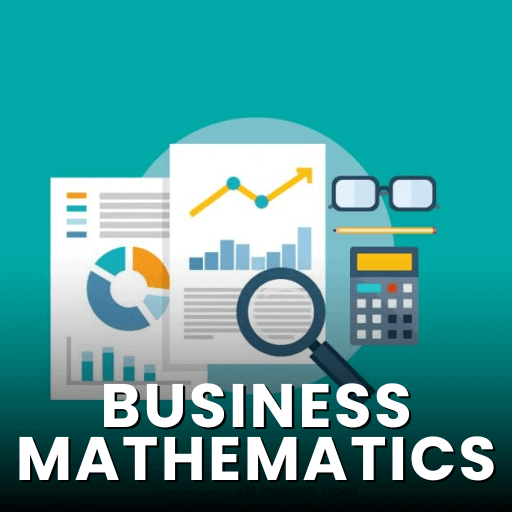Best Study Material for CA Foundation Exam
CA Foundation Exam > CA Foundation Notes > Accounting for CA Foundation > MCQ - Bills of Exchange and Promissory Notes - 5
MCQ - Bills of Exchange and Promissory Notes - 5 | Accounting for CA Foundation PDF Download
| Download, print and study this document offline |
Please wait while the PDF view is loading
Page 1 Bills of Exchange and Promissory Notes-Part 5/6 CPT Section A Fundamentals of Accountancy Chapter 7 Unit 3 CA. Ajay Lunawat Page 2 Bills of Exchange and Promissory Notes-Part 5/6 CPT Section A Fundamentals of Accountancy Chapter 7 Unit 3 CA. Ajay Lunawat Question No 1 The purpose of accommodation bill is: Answer (c) (a) To finance actual purchase or sale of goods (b) To facilitate trade transmission (c) When both parties are in need of funds (d) None of the above Page 3 Bills of Exchange and Promissory Notes-Part 5/6 CPT Section A Fundamentals of Accountancy Chapter 7 Unit 3 CA. Ajay Lunawat Question No 1 The purpose of accommodation bill is: Answer (c) (a) To finance actual purchase or sale of goods (b) To facilitate trade transmission (c) When both parties are in need of funds (d) None of the above Question No 2 A draws a bill on B for Rs. 4,500 for mutual accommodation in the ratio 2:1. A got it discounted at Rs. 4,230 and remitted 1/3rd of the proceeds to B. At the time of maturity, how much amount A should remit to B such that B can pay off bill? Answer (a) (a) Rs. 3,000 (b) Rs. 2,880 (c) Rs. 2,920 (d) Rs. 3,010 Page 4 Bills of Exchange and Promissory Notes-Part 5/6 CPT Section A Fundamentals of Accountancy Chapter 7 Unit 3 CA. Ajay Lunawat Question No 1 The purpose of accommodation bill is: Answer (c) (a) To finance actual purchase or sale of goods (b) To facilitate trade transmission (c) When both parties are in need of funds (d) None of the above Question No 2 A draws a bill on B for Rs. 4,500 for mutual accommodation in the ratio 2:1. A got it discounted at Rs. 4,230 and remitted 1/3rd of the proceeds to B. At the time of maturity, how much amount A should remit to B such that B can pay off bill? Answer (a) (a) Rs. 3,000 (b) Rs. 2,880 (c) Rs. 2,920 (d) Rs. 3,010 Question No 3 Lara draws an accommodation bill on Sachin. The proceeds are to be borne between Sachin and Lara in the ratio of 3:1. The amount of bill 6000, discounting charges 120. Discount borne by Sachin will be: Answer (a) (a) 90 (b) 120 (c) 100 (d) None Page 5 Bills of Exchange and Promissory Notes-Part 5/6 CPT Section A Fundamentals of Accountancy Chapter 7 Unit 3 CA. Ajay Lunawat Question No 1 The purpose of accommodation bill is: Answer (c) (a) To finance actual purchase or sale of goods (b) To facilitate trade transmission (c) When both parties are in need of funds (d) None of the above Question No 2 A draws a bill on B for Rs. 4,500 for mutual accommodation in the ratio 2:1. A got it discounted at Rs. 4,230 and remitted 1/3rd of the proceeds to B. At the time of maturity, how much amount A should remit to B such that B can pay off bill? Answer (a) (a) Rs. 3,000 (b) Rs. 2,880 (c) Rs. 2,920 (d) Rs. 3,010 Question No 3 Lara draws an accommodation bill on Sachin. The proceeds are to be borne between Sachin and Lara in the ratio of 3:1. The amount of bill 6000, discounting charges 120. Discount borne by Sachin will be: Answer (a) (a) 90 (b) 120 (c) 100 (d) None Question No 4 A drew a bill on B for Rs. 50,000 for 3 months. Proceeds are to be shared equally. A got the bill discounted at 12% p.a. and remits required proceeds to B. The amount of such remittance will be: Answer (a) a) Rs. 24,250 b) Rs. 25,000 c) Rs. 16,167 d) Rs. 32,333Read More
|
68 videos|160 docs|83 tests
|
FAQs on MCQ - Bills of Exchange and Promissory Notes - 5 - Accounting for CA Foundation
| 1. What is a bill of exchange? |  |
| 2. What is a promissory note? |  |
Ans. A promissory note is a written promise made by one party (the maker) to pay a certain sum of money to another party (the payee) at a specified future date or on demand. Unlike a bill of exchange, a promissory note does not involve three parties.
| 3. What is the difference between a bill of exchange and a promissory note? |  |
Ans. The main difference between a bill of exchange and a promissory note is the number of parties involved. A bill of exchange involves three parties: the drawer, the drawee, and the payee. On the other hand, a promissory note involves only two parties: the maker and the payee. Additionally, a bill of exchange is an order to pay, while a promissory note is a promise to pay.
| 4. How are bills of exchange and promissory notes used in business transactions? |  |
Ans. Bills of exchange and promissory notes are commonly used in business transactions as a means of extending credit or obtaining finance. They provide a written record of the agreement between parties regarding the payment of a specific sum of money. These instruments can be transferred to third parties, allowing for flexibility in payment arrangements.
| 5. What are the legal requirements for a bill of exchange or promissory note to be valid? |  |
Ans. To be valid, a bill of exchange or promissory note must meet certain legal requirements. These include being in writing, containing an unconditional promise to pay a specific sum of money, identifying the parties involved, stating the payment date or term, and being signed by the drawer or maker. Failure to meet these requirements may render the instrument invalid and unenforceable.
Related Searches































